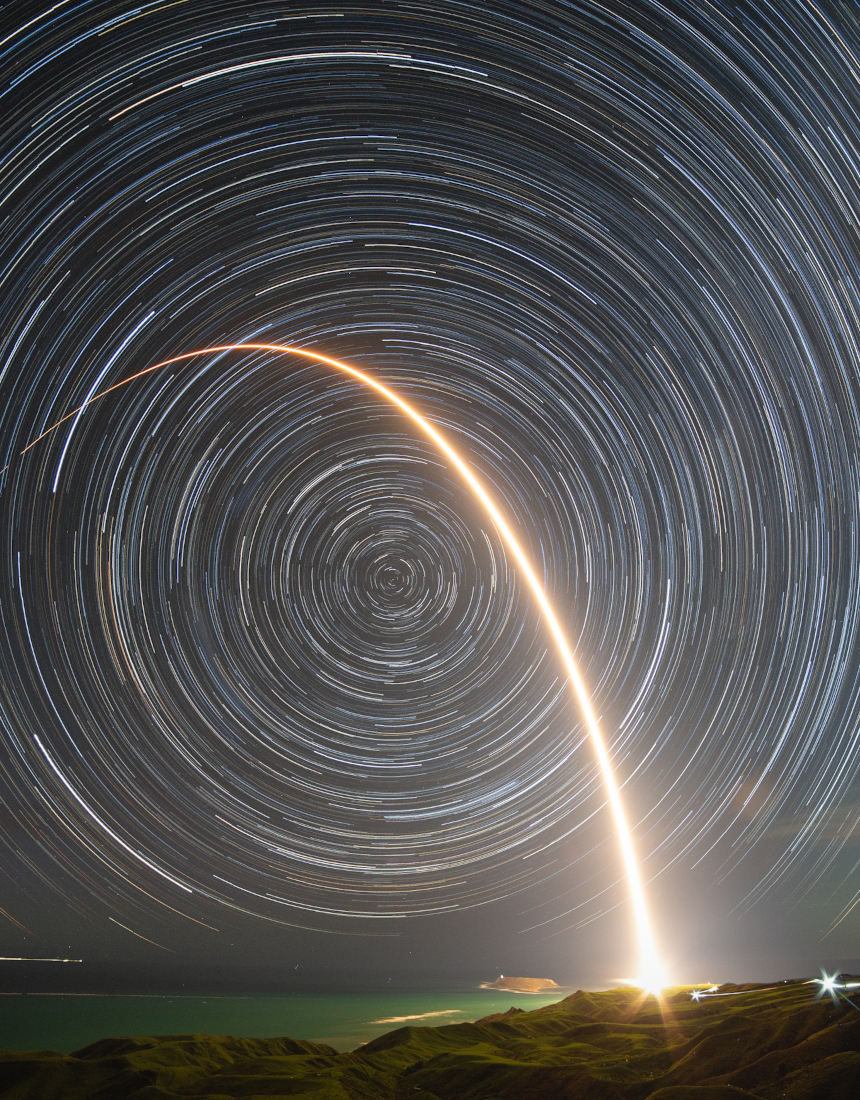滿天弧線
Sky Full of Arcs

來源:Rory Gannaway|發表日期:2024-08-17
8 月 11 日,一枚火箭實驗室電子火箭從一顆旋轉的行星上發射升空。火箭上載有一顆小型衛星,它的任務被稱為 "滿天的合成孔徑雷達衛星"(A Sky Full of SARs),從紐西蘭北島的馬希亞半島(Mahia Peninsula)出發,進入低地球軌道。在這幅南部海景和天景圖中,"電子 "號優美的發射弧線所留下的熾熱痕跡朝向東方,這是在 2 . 5 小時內連續拍攝的 50 幅畫面的合成圖。相機固定在三腳架上,正對著南天極,即地球自轉軸向太空的延伸。但在南半球的夜空中,並沒有明亮的恆星標誌著這個位置。不過,南天極還是很容易發現的。它位於佈滿天空視野的同心星跡弧線的中心。 相簿: 2024 年英仙座流星雨和極光
原文:On August 11 a Rocket Lab Electron rocket launched from a rotating planet. With a small satellite on board its mission was dubbed A Sky Full of SARs (Synthetic Aperture Radar satellites), departing for low Earth orbit from Mahia Peninsula on New Zealand's north island. The fiery trace of the Electron's graceful launch arc is toward the east in this southern sea and skyscape, a composite of 50 consecutive frames taken over 2.5 hours. Fixed to a tripod, the camera was pointing directly at the South Celestial Pole, the extension of planet Earth's axis of rotation in to space. But no bright star marks that location in the southern hemisphere's night sky. Still, the South Celestial Pole is easy to spot. It lies at the center of the concentric star trail arcs that fill the skyward field of view. Gallery: Perseid Meteor Shower 2024 and Aurorae
※ 本文由萌芽機器人自動轉貼自每日一天文圖(Astronomy Picture of the Day,APOD),原文為英文,正體中文是透過 DeepL 翻譯及 OpenCC 進行自動處理,內容僅供參考,若有任何錯誤之處還請見諒!
關於每日一天文圖:每日一天文圖網站是美國國家航空暨太空總署與密西根理工大學提供的服務,網站每天提供一張影像或圖片,並由天文學家撰寫扼要說明其特別之處。